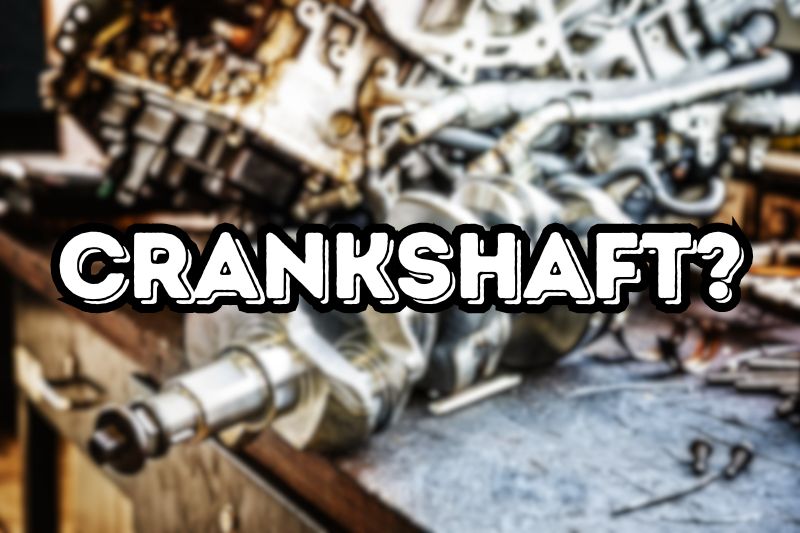Imagine you’re driving your car, feeling the engine’s power as you accelerate. Have you ever wondered what makes that power possible? One crucial component behind this magic is the crankshaft.
Often overlooked, this engine part plays a vital role in transforming the energy from combustion into motion. Let’s explore its function and importance in keeping your vehicle running smoothly.
The Basics
The crankshaft is a key part of an engine, found in both cars and various types of machinery. Think of it as the bridge that connects the engine to the wheels, enabling the car to move.
Its primary job is to convert the up-and-down motion of the pistons into a rotating motion that turns the wheels. This simple-sounding task is essential for the engine’s performance and efficiency.
How Does It Work?
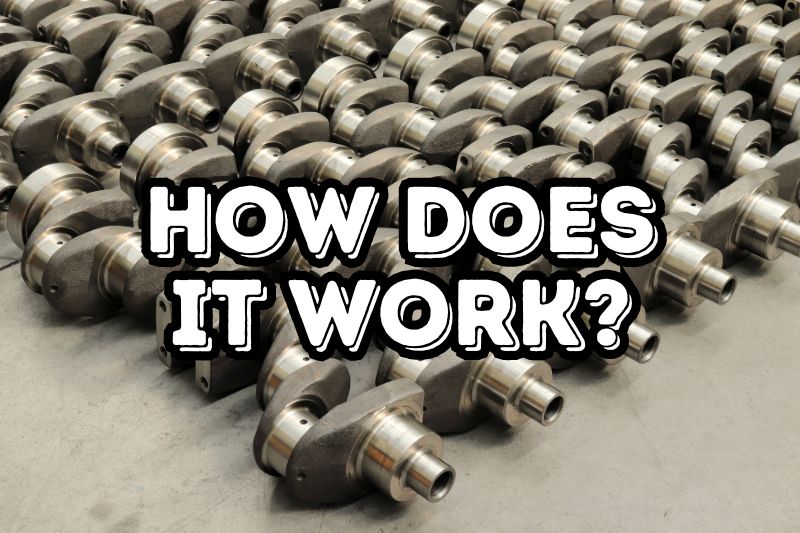
When fuel burns in the engine’s cylinders, it creates pressure. This pressure pushes the pistons down, generating a linear motion. The crankshaft’s job is to take this linear motion and convert it into a rotational motion.
This rotational motion is what ultimately turns the wheels and propels the vehicle forward. Connecting rods link the pistons to the crankshaft.
As the pistons move up and down, the connecting rods pivot, causing the crankshaft to rotate. This process happens in a precise sequence, ensuring smooth and efficient engine operation. The crankshaft has several journals, which are smooth, round sections that sit on bearings.
These journals allow it to rotate freely with minimal friction. Main journals support the crankshaft within the engine block, while rod journals connect to the connecting rods.
To maintain balance and reduce vibrations, the crankshaft features counterweights. These weights help offset the forces generated by the moving pistons and connecting rods. Proper balance is crucial for engine longevity and smooth operation.
Types of Crankshafts
Crankshafts come in various types, each designed to meet specific performance and durability requirements.
1. Cast Iron
Cast iron crankshafts are common in many vehicles due to their durability and cost-effectiveness. They are made by pouring molten iron into a mold, allowing it to cool and harden. These are strong and can handle the demands of everyday driving.
2. Forged Steel
For high-performance and heavy-duty applications, forged steel crankshafts are the go-to choice. They are made by heating a steel billet and then shaping it under high pressure. This process results in denser, stronger crankshafts that can withstand greater stress and higher RPMs.
3. Billet
Billet crankshafts are custom-made from a single piece of steel. They offer superior strength and precision, making them ideal for racing engines and high-performance applications. However, their high cost limits their use of specialized engines.
Components and Design
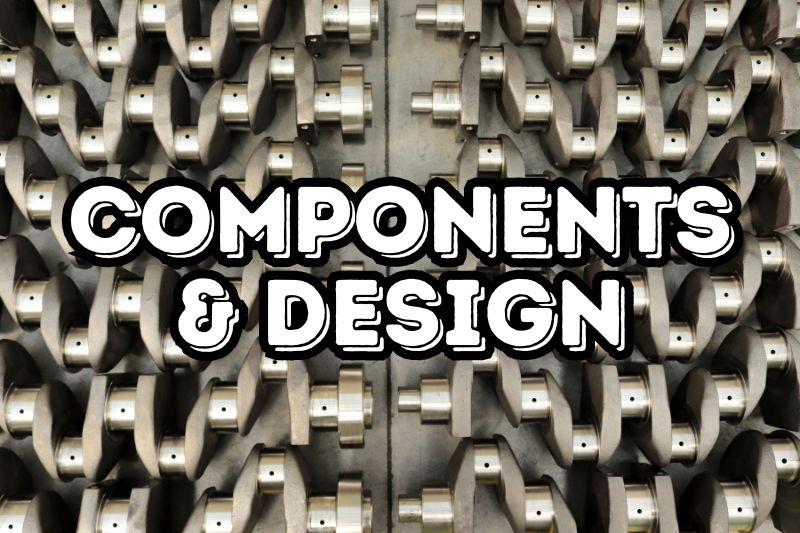
To fully understand a crankshaft, it’s essential to break down its components and design.
1. Main Bearing Journals
Main bearing journals are the crankshaft’s primary support points. They sit in the engine block’s main bearings and allow the crankshaft to rotate smoothly. These journals must be precisely machined to ensure proper alignment and reduce friction.
2. Rod Journals
Rod journals connect the crankshafts to the connecting rods. They are offset from the main bearing journals, creating the crankshaft’s distinctive shape. Properly designed rod journals ensure efficient power transfer from the pistons to the crankshafts.
3. Crankshaft Throws
Crankshaft throws are the offset sections that connect the rod journals to the main journals. Their length and position determine the engine’s stroke, which affects displacement and power output.
4. Oil Passages
To ensure proper lubrication, crankshafts have internal oil passages. These passages allow oil to flow from the main journals to the rod journals, reducing friction and wear. Proper lubrication is essential for longevity and performance.
The Manufacturing Process
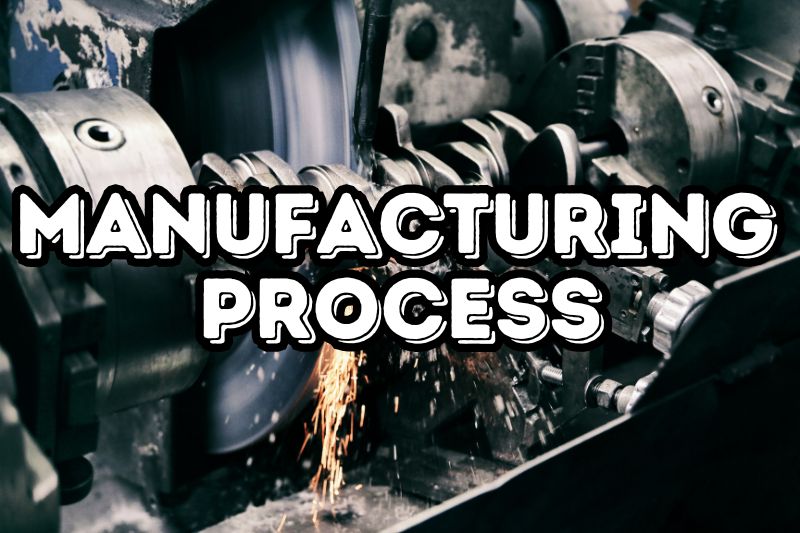
Creating a crankshaft involves a detailed and precise manufacturing process, ensuring each component meets the high standards required for optimal engine performance.
1. Casting
For cast iron crankshafts, the manufacturing process begins with melting iron and pouring it into a mold. Once the iron cools and solidifies, the rough crankshaft is removed from the mold and undergoes machining to achieve the final shape and dimensions.
2. Forging
Forged steel crankshafts start with a steel billet, which is heated and then shaped using high-pressure dies. This process increases the crankshaft’s density and strength, making it ideal for high-performance applications. After forging, the crankshaft is machined to achieve precise dimensions.
3. Machining
Regardless of the initial manufacturing method, all crankshafts undergo extensive machining. This process includes grinding the journals to achieve a smooth surface, drilling oil passages, and balancing the crankshaft to ensure smooth operation.
4. Heat Treatment
To enhance strength and durability, crankshafts undergo heat treatment processes such as nitriding or induction hardening. These treatments increase surface hardness, reducing wear and extending the crankshaft’s lifespan.
Failures and Maintenance
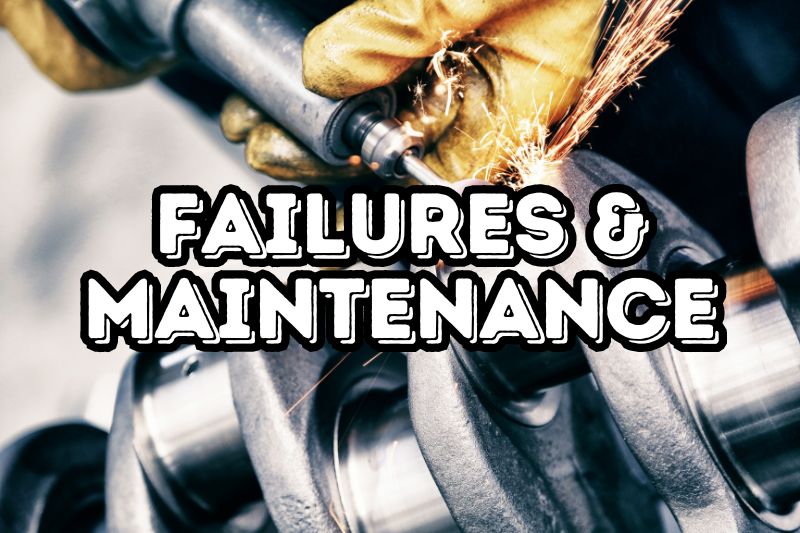
Ensuring the longevity and efficiency of your crankshaft requires understanding common failures and implementing proper maintenance practices.
1. Common Causes of Failure
Crankshafts can fail due to several reasons, including:
- Lack of lubrication: Insufficient oil can cause excessive friction and wear.
- Overloading: Excessive stress from high RPMs or heavy loads can cause cracks.
- Fatigue: Repeated stress cycles can lead to metal fatigue and failure.
2. Signs of a Failing Crankshaft
Early detection of issues can prevent catastrophic engine failure. Look out for these signs:
- Unusual noises: Knocking or grinding sounds from the engine.
- Vibrations: Excessive engine vibrations, especially at certain RPMs.
- Oil pressure issues: Low oil pressure or metal particles in the oil.
3. Maintenance Tips
To keep your crankshaft in good condition, follow these maintenance tips:
- Regular oil changes: Ensure proper lubrication and remove contaminants.
- Monitor engine performance: Pay attention to unusual noises or vibrations.
- Avoid overloading: Operate within the recommended RPM range and avoid excessive loads.
The Role of Crankshafts in Modern Engines
In modern engines, the crankshaft plays a crucial role in enhancing performance, and efficiency, and meeting environmental standards.
1. Performance Enhancements
Modern crankshafts are designed to handle higher power outputs and RPMs. Innovations such as lightweight materials, advanced manufacturing techniques, and precise balancing contribute to improved engine performance and efficiency.
2. Environmental Considerations
With stricter emissions regulations, crankshaft design plays a role in reducing engine emissions. Lighter, more efficient crankshafts contribute to lower fuel consumption and reduced emissions, helping meet environmental standards.
3. Future Developments
As technology advances, crankshaft design will continue to evolve. Future developments may include the use of new materials, further weight reduction, and integration with hybrid and electric powertrains to improve overall vehicle efficiency.
The Bottom Line
The crankshaft, though often overlooked, is a vital component of any engine. It converts the energy from combustion into motion, enabling vehicles and machinery to operate efficiently. Understanding the crankshaft’s function, types, and maintenance can help you appreciate its importance and ensure your engine runs smoothly.

